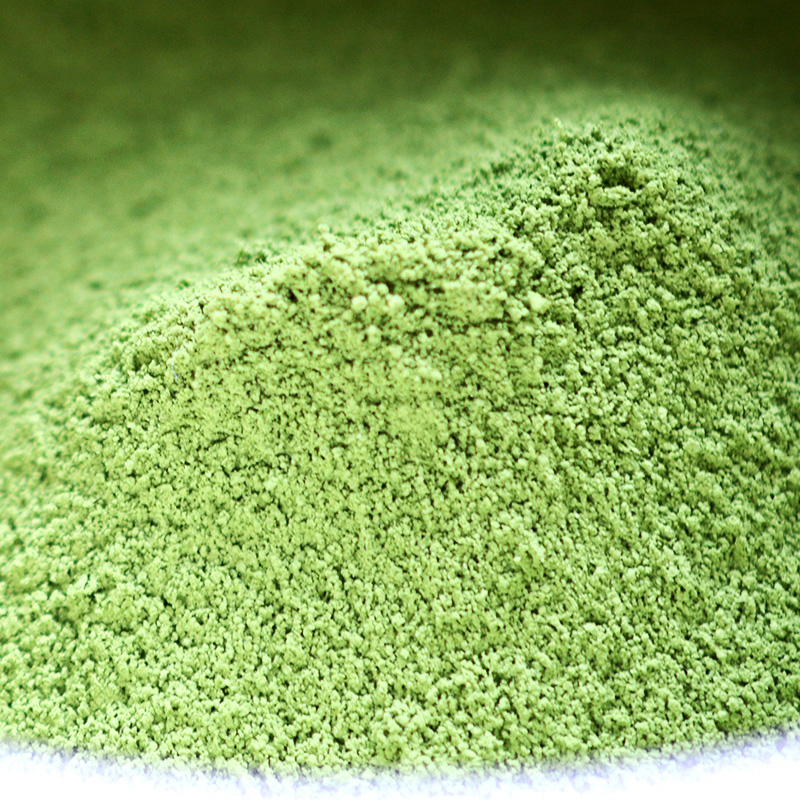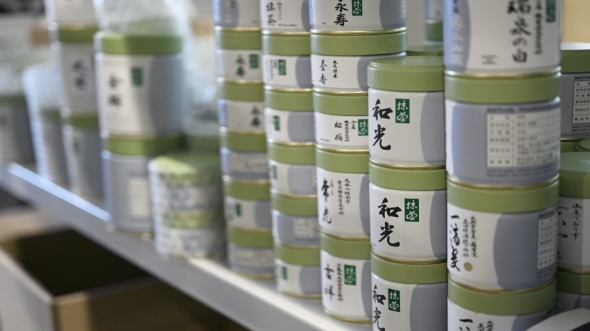Matcha is a versatile and multi-faceted tea. When selecting the perfect matcha for your needs, it’s important to choose well. With so many brands and price points to choose from, however, how do you pick the right matcha for your needs? In this blog post, we'll guide you through the diverse options to help you make the best choice.
Reading time: 15 min.
Understanding Matcha Grades and Pricing
Let’s begin with a key topic: the different grades of matcha. We can classify matcha into three main categories
- Ceremonial Grade, Koicha
- Ceremonial Grade, Usucha
- Cooking Grade Matcha
This classification is based on the grade of the matcha, which is often reflected in its price. Koicha-grade matcha typically comes with a higher price tag, indicating the care it received, the specific cultivars used, and its intended purpose.
With very few exceptions, matcha is a blend of various tea cultivars, each with its own price and flavor profile. Some cultivars are better suited for koicha, while others excel in usucha grade or cooking grade matcha.
Most tea manufacturers are traditional family businesses with strict pricing guidelines. There are exceptions, like Kanbayashi Shunshō, who indicates whether their matcha is intended for koicha or usucha. However, in general, we can say that different grades of matcha typically fall within specific price ranges.
- Koicha: If the matcha costs approx. over $25 for 40g, it is koicha grade, ideal for thick tea.
- Usucha: between approx. $25 and $8, it is best prepared as usucha, or thin tea.
- If it is under approx. $8 for 40g, it’s surely cooking grade.
Prices are telling. They reveal a lot about the intended purpose of each tea. But does a higher price always guarantee a better fit for your needs? Not necessarily. This brings us to our next important topic: the differences in flavor.
Three Grades - Three Flavor Profiles
Koicha Grade Matcha:
Koicha are thick, creamy, and intensely flavored teas with the pleasant bitterness of green tea. Koicha is sophisticated and it is important to note: made in a limited quantity. The mellow and elegant flavors truly stand out when prepared as a thick tea with little water. Koicha is a celebratory tea. Traditionally, it has been treasured for special occasions and served to esteemed guests, rather than enjoyed on a daily basis.
Usucha Grade Matcha:
In usucha grade teas, the sweetness and bitterness are in a good balance. Some teas may lean more towards sweetness, while others have a more pronounced bitterness, depending on the manufacturer. Each producer has their own preferred approach, which shapes the flavor profile of their teas. Usucha is versatile and can be enjoyed on its own or used in soft drinks mixed with milk or blended into cocktails.
Cooking Grade Matcha:
Culinary-grade matcha tends to have a stronger bitterness and a less vibrant green color compared to ceremonial grade teas. However, its robust, grassier flavor profile makes it perfect for lattes, creams, and pastries, as the rich taste of green tea shines through when combined with other ingredients.
In sum, while koicha is a wonderful tea on its own, it may not hold up well in a latte due to competing flavors. Usucha can perform well both on its own and in soft drinks. On the other hand, culinary-grade matcha may be too bitter on its own but works amazingly in lattes, pastries, or chocolates.

Different Matcha For Different Purposes
It's important to be mindful of what we want from our cup of tea. Everyone has different needs and expectations, so understanding what you personally need is key. Are you looking for a culinary delight? Want to embrace a lifestyle change and enjoy the health benefits of green tea? Or maybe you’re just looking to spice up your mornings by swapping coffee for a cup of tea?
For A Gourmet Tea Experience:
It is often said that matcha is an acquired taste. Its unique, grassy flavor and slight bitterness might be a process to appreciate. Once we get there, however, it is a true gourmet experience. For those who enjoy the essence of green tea with all its creaminess, marine and bitter notes, matcha prepared the traditional ceremonial way as usucha or koicha is the path to walk.
For Improving Health:
Matcha is rich in antioxidants, may boost metabolism, and improve focus. Does higher quality mean more health benefits though? While higher-grade, more expensive matcha often boasts a richer flavor, it doesn’t necessarily offer higher levels of antioxidants, amino acids, or caffeine. If you have specific health goals, there are special matcha options available! Gabaroncha can help with weight loss, Maruto Matcha is great for those managing diabetes, and Low-Caffeine Matcha is perfect for anyone sensitive to caffeine. For generally improve health though, it is best to drink one or two bowls of usucha every day.
As A Healthier Alternative For Coffee
Matcha provides a more gradual release of energy. This is due to the presence of L-theanine, an amino acid that promotes calmness and focus while mitigating the jittery effects of caffeine. Thus, depending on how one likes their coffee, 1-2 bowls of Usucha or a couple of matcha latte prepared from cooking grade matcha are the best choice.

Examples For Great Koicha/Usucha/Soft Drinks
Koicha Grade Matcha:
 Koicha Babamukashi - and exciting, exceptionally sweet and pampering tea. Its extraordinary and mellow notes shine as koicha. Recommended for festive tea gatherings.
Koicha Babamukashi - and exciting, exceptionally sweet and pampering tea. Its extraordinary and mellow notes shine as koicha. Recommended for festive tea gatherings.
Usucha Grade Matcha
 Matcha Daigyoku - a well-balanced, pleasant and refreshing tea which makes a great and satisfying usucha but also delicious as latte. It has enough characteristic bitterness not to be overshadowed by milks. Recommended as an everyday usucha (1-2 bowls a day).
Matcha Daigyoku - a well-balanced, pleasant and refreshing tea which makes a great and satisfying usucha but also delicious as latte. It has enough characteristic bitterness not to be overshadowed by milks. Recommended as an everyday usucha (1-2 bowls a day).
Cooking Grade Matcha:
 Matcha Maki no Shiro: with the captivating bitterness of green tea, this matcha is perfect for creating delicious soft drinks and pastries.
Matcha Maki no Shiro: with the captivating bitterness of green tea, this matcha is perfect for creating delicious soft drinks and pastries.
 Organic Cooking Matcha: A health-conscious choice for latte. Recommended for those who enjoy matcha latte in larger quantities or kitchen enthusiasts who love cooking.
Organic Cooking Matcha: A health-conscious choice for latte. Recommended for those who enjoy matcha latte in larger quantities or kitchen enthusiasts who love cooking.
How To Prepare Matcha?
Koicha:
STEP 1) Warm your matcha bowl with hot water. Let it sit for a minute, then discard the water and wipe the bowl dry.
STEP 2) Put 4g (2 teaspoon or 4 chashaku scoop) sifted matcha powder into the chawan.
STEP 3) Pour 15 ml (0.5 fl oz) 80℃ (176°F) water over the matcha powder and mix with a chasen until all the lumps are gone.
STEP 4) Pour 15-25 ml (0.5-0.8 fl oz) 80℃ (176°F) water over it again, and whisk slowly and gently until it is a smooth, velvety cream.
STEP 5) When your matcha is ready, drink it immediately, because as it cools down it will get thicker and might turn bitter.
Usucha:
STEP 1) Warm your matcha bowl with hot water. Let it sit for a minute, then discard the water and wipe the bowl dry.
STEP 2) Put 1.5-2g (about 1 teaspoon or 2 chashaku scoop) sifted matcha powder into the chawan.
STEP 3) Pour 75-80 ml (2.7 fl oz) 85℃ (185°F) water over the matcha powder.
STEP 4) Whisk with a chasen (tea whisk) until foamy.
STEP 5) When your matcha is ready, drink it immediately, because as it cools down it might turn bitter and the foam collapses.
Matcha Latte:
STEP 1) Swift 2g matcha powder into a bowl.
STEP 2) Pour 50 ml (1.7 fl oz) 75-80℃ (167-176°F) water over it and whisk it with a chasen.
STEP 3) Pour the matcha into a mug.
STEP 4) Warm and froth 150 ml (5 fl oz) 65℃ (150°F) milk.
STEP 5) Gently pour the milk over the matcha in the mug.
* If you enjoy layering, pour the milk first, then carefully add the hot matcha on top. Sweeten to your liking!
Whether you're brewing a traditional tea or using matcha in your favorite recipes, keep these categories in mind for the best experience!
Good luck in your tea journey!

 Next >>
Next >>



